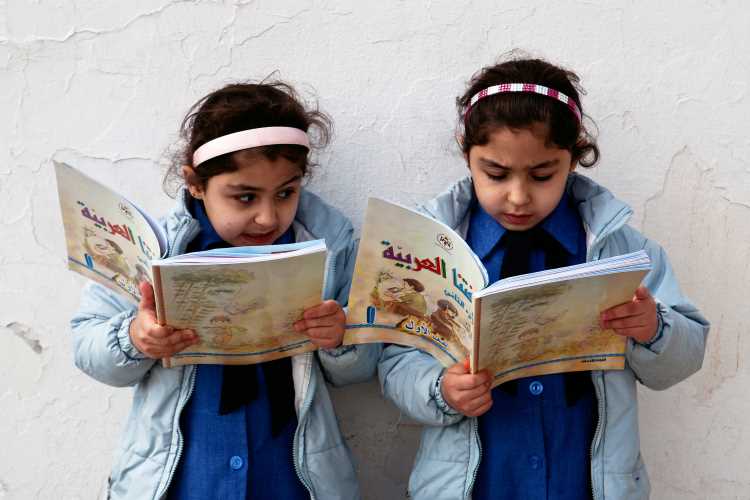A food chain describes which organisms in the ecosystem consume other organisms. It is a series of creatures in which nutrients and energy are passed from one to the next. When one organism swallows another, something occurs.
It starts with the producer organism, moves along with it, and finally terminates with the decomposer organism. After learning about it, we can see how one organism is reliant on another for existence.
Read on to get a deep explanation of the topic of what is a food chain and its types.
What is a Food Chain and Its Types?
In an ecosystem, a food chain is a series of events wherein one living thing consumes another, which is subsequently devoured by a bigger organism. It is the movement of nutrients needed from one creature to another at various trophic levels.
The feeding pattern or interaction between living species is also explained by this natural activity. The trophic level relates to an order in which producers, primary, secondary, and tertiary consumers, starting from the bottom with producers and ending with primary, secondary, and tertiary consumers. A trophic level is the lowest level.
Also Read Tokyo Olympics 2021 Quiz Questions and Answers: Let Kids Know Olympics
Types of Food Chain
Detritus Food Chain
Algae, bacteria, fungus, protozoa, lice, insects, nematodes, and other creatures and plants are all part of it. This chain starts with organic matter that has died.
Decomposers and detritivores use the dietary energy, which is then consumed by smaller creatures such as carnivores. Carnivores such as maggots become a meal for larger carnivores such as frogs, snakes, and other predators.
Detritivores are primary consumers who feed on detritus, such as fungus, bacteria, protozoans, and other organisms.
Grazing Food Chain
It begins with green plants, moves via herbivores, and finally to carnivores. Photosynthesis provides energy to the bottom trophic level in a grazing food chain.
Food Chain Example for Kids
Here are some examples:
# Nectar (flowers) > butterflies > small birds > foxes.
# Fruits > tapir > jaguar.
# Fruits > monkeys > monkey-eating eagle.
# Grass > antelope > tiger > vulture.
# Grass > cow > man > maggot.
Parts
The Sun
The sun is the earth’s primary source of energy, supplying it to everything in the world.
Producers
All autotrophs, such as cyanobacteria, phytoplankton, algae, and green plants, are the producers. This is the initial step of the process. The first rung of a chain is made up of producers. The sun’s energy is used by the producers to generate food.
Producers, also described as autotrophs, are organisms that produce their own nourishment. Any plant or other creature that produces its own nutrition through photosynthesis is referred to as a producer. Green plants, plankton, and microalgae, for example, are all examples of producers.
Consumers
Consumers are all creatures that rely on flora or other organisms for nutrition. Because it encompasses practically all living species, this is the greatest section of a food web.
It contains herbivores (species that eat plants), carnivores (animals that eat animals), parasites (animals that survive on other organisms by hurting them), and scavengers (animals that devour the corpses of deceased animals).
Primary consumers are herbivores, whereas secondary consumers are carnivores. The 2nd trophic level is made up of organisms that eat producers. As a result, species at the second trophic level are main consumers or herbivores.
Also Read: Interesting Facts About Mars for Kids: Know Your Neighbouring Planet
Decomposers
Organisms that acquire energy from the breakdown of dead or discarded organic waste are known as decomposers. This is the final link in the food chain.
Decomposers transform organic waste products into inorganic materials like nutrient-rich soil or land, making them an important element.
A life cycle is completed by decomposers. They assist in nutrient recycling by supplying nutrients to soil or seawater that may be used by autotrophs or producers.
Food Web
A food web is comparable to a food chain, except that a food web is far broader than a food chain. A single creature is occasionally devoured by a large number of predators, or it consumes multiple other species. Many trophic levels become intertwined as a result of this. It doesn’t do a good job of displaying energy flow.
However, because it depicts interactions between diverse creatures, the food web is able to demonstrate an accurate depiction of energy flow.
The food web becomes more complicated when there are more cross interactions across various food chains. A more complicated process leads to a more long-term ecology.
Amazing Facts on Food Chain for Kids
Here are some interesting facts:
# A food chain has two sorts of components: producers and consumers. A producer is one who makes energy, whereas a consumer is one who uses it.
# An autograph is another term for a producer.
# Plants create food, whereas other living creatures consume it.
# In the animal kingdom, there are four sorts of consumers: carnivores, herbivores, omnivores, and scavengers.
# Carnivores are creatures that solely eat other animals.
# Herbivores eat plants only.
# An Omnivore is a person who consumes both plants and animals.
# A Scavenger is a creature who consumes dead animals.
# A food chain begins with plants. They create their food with sunlight as a source of energy.
Conclusion
Food chains are important because they illustrate the complex relationships that exist in an ecosystem. It demonstrates how every living thing relies on the survival of other organisms. This process is a diagram that depicts the path of energy movement within an ecosystem.
This was a topic from science and the environment. If you want more topics like this, check out the blog section of The Real School Of Montessori.
Also Read: Quiz Games for Small Kids: Know the Activities to Make kids Aware of the World







